Meet the Blue Tit
The bossy blue bird at the bird feeder.
A birdwatcher enjoys a coffee while watching birds visiting the bird feeder. There are blue-yellow flashes as one of the smaller birds darts between the feeder and the safety of a nearby bush. A variety of other birds take their turns, too. But the birdwatcher places their mug down with a clunk, catching the blue-yellow bird’s attention…
CHRRRRR-IP-IP IP!
The birds scatter.
Ah, that’d be a Blue Tit then. Or ‘the most fearsome defender of the bird feeder’, as they’d probably rather be known. At up to 14g, these are one of the smallest birds in the country – but they’re also one of the fiercest!
This is their ‘ground predator’ alarm call, so foxes and cats are also treated to it. It tells their peers to scatter. They also have a call for airborne predators, which prompts small birds in the vicinity to freeze.
Other species of bird respond to these Blue Tits alarm calls, making them a pretty handy addition to mixed flocks (despite their aggression at the feeders!).
ID features
How do you know that the bird you’re looking at is indeed a Blue Tit? Well, familiarise yourself with its alarm call and it’ll introduce itself as soon as it spots you!
If you’re fortunate enough to go unnoticed, they are relatively easy to ID from their blue cap, blue stripe of feathers running from the beak through the eye to the back of the head, and another blue stripe running around their neck. These blue streaks join at the back of the head, with white cheeks and a white patch over the top of the beak and above the eyes.
They then have an olive green back, blue wings and tail, and a yellow belly. They often have a dark streak down the middle of the chest/belly, too. They are extremely colourful, although Great Tits have a similar arrangement of colours so can be difficult to tell apart at first.
Additionally, the adults can look a bit dull and straggly when they are rearing chicks and during the ‘moult’ they go through after the chicks have fledged. And juveniles also take a while to develop the brighter and more clearly defined adult plumage.
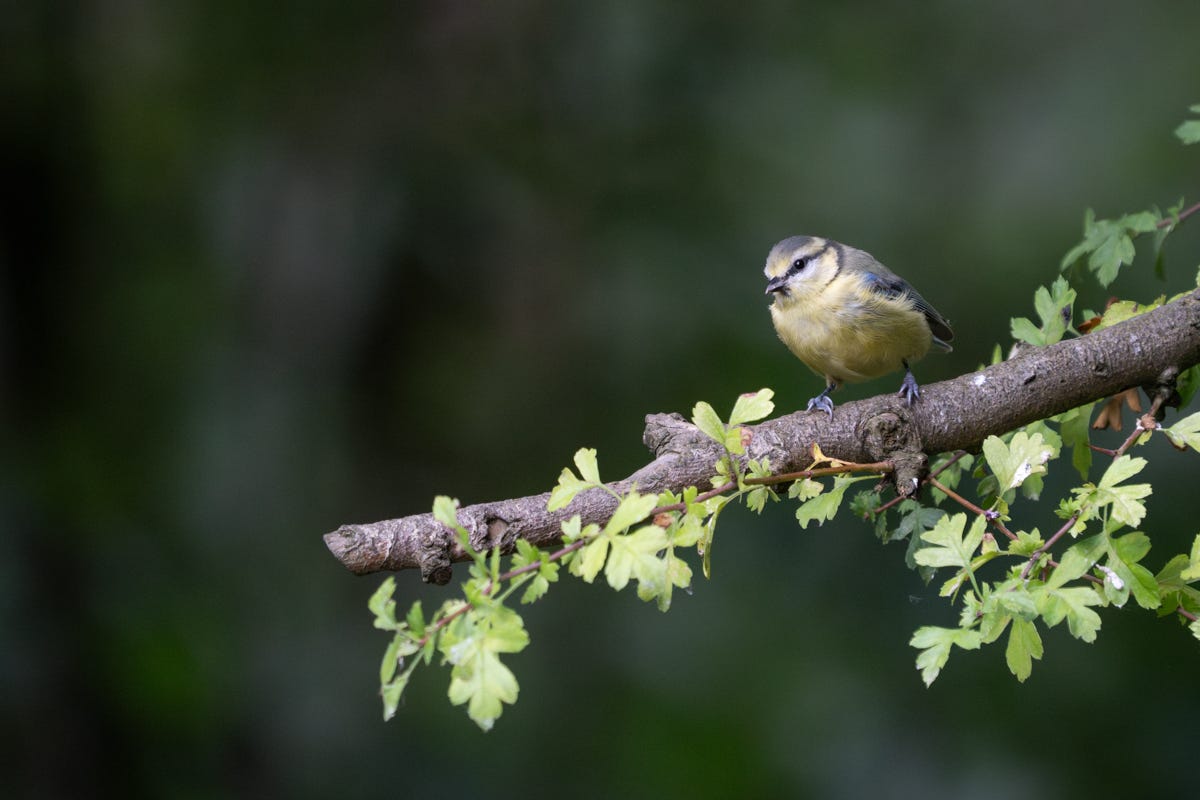
As well as their angry alarm call, Blue Tits make a series of sweeter calls, like ‘tee tee tee’ when they’re travelling together in flocks.
Feeding behaviour
With 3.6 million estimated territories in the UK and their love of bird feeders, these are one of the easiest birds to spot. They will often hang out on feeders for long periods and in small (or even large groups). They are brave and persistent characters, so will often try to chase other, larger birds away from the food source!
Away from bird feeders, they eat invertebrates – especially caterpillars during spring – and any seeds and nuts they might find.
Sentinels, aggressors
As a birdwatcher, I can attest to their dedication to their sentinel duties. Once a Blue Tit has spotted you, it will not only announce your position to other birds but follow you until you’re off of its patch. I have yet to stand my ground long enough to see if they eventually get bored and go away.
As well as acting as an early warning system to other species of birds whenever they see a predator, they are not afraid to defend themselves. Many a bird ringer has stated that they are the most aggressive birds caught in mist nets, and that applying the identification ring to their legs often results in bleeding hands.
But this bravery also makes them excellent photography subjects. They are small and lively, but abundant and brave – and such attractive little birds.
Where to spot a Blue Tit
Blue Tits can be seen anywhere and everywhere in the UK, except the highest highlands and most northerly islands (especially if there is food available).
They are particularly acrobatic and can often be seen on the very outer twigs of a tree, picking insects off while hanging upside down. They also travel in small groups along hedgerows with other small birds such as Great Tits.
Easily confused with
Great Tits are bigger than Blue Tits and have black heads and chin/chest stripes. They do share many features with Blue Tits, such as the yellow chest, white cheeks and olive green back. Fortunately, these lookalikes often hang about in mixed flocks it can be easier to contrast the two species against each other.
Coal Tits also don’t have any blue on them, and feature a white stripe down the back of the head that Blue Tits lack. They are very small and also tend to dart from cover to the feeder and back again, which can make it hard to get a clear sighting of. They may also be found in mixed flocks, but often are found on their own or in pairs in deep woodland.

Bonus Blue Tit facts
The words in its Latin name, Cyanistes caeruleus, mean ‘dark blue’ and ‘blue’, respectively
‘Tit’ comes from the original name, ‘Titmouse’, and tits, chickadees and titmouses are all in the Paridae family of birds
Blue Tits are thought to symbolise joy, hope and optimism, as well as adaptability and overcoming challenges
The yellow belly of the Blue Tit is brighter in birds that have eaten more yellowy-green caterpillars, due to the pigments they contain
Blue Tits can see ultraviolet light – males have a more intense blue cap, so this might help them tell the sexes apart
In the South of England they have the nickname ‘Billy Biter’ due to their biting behaviour towards anything that enters their nest while they are sitting on eggs
Their other nicknames include Tomtit, pickcheese, blue ox-eye, heckymal and nun
The oldest Blue Tit ever recorded in the wild was 12 years old in the Czech Republic
Blue Tits in the UK are known for learning to peck through foil milkbottle caps on doorsteps to eat the cream that solidified at the top of the bottle (back when milk deliveries were more common). This knowledge spread rapidly throughout the population, showing that these smart little birds can easily learn new behaviours from each other
Their main predators are thought to be Sparrowhawks and domestic cats, although nests are likely to be raided by a wide range of species from Jays and woodpeckers to Weasels and Grey Squirrels.
Have you seen a Blue Tit this week? Did you know their yellow bellies tell you how many caterpillars they’ve eaten?
If this has helped you ID Blue Tits, please hit the heart button or let me know in the comments.



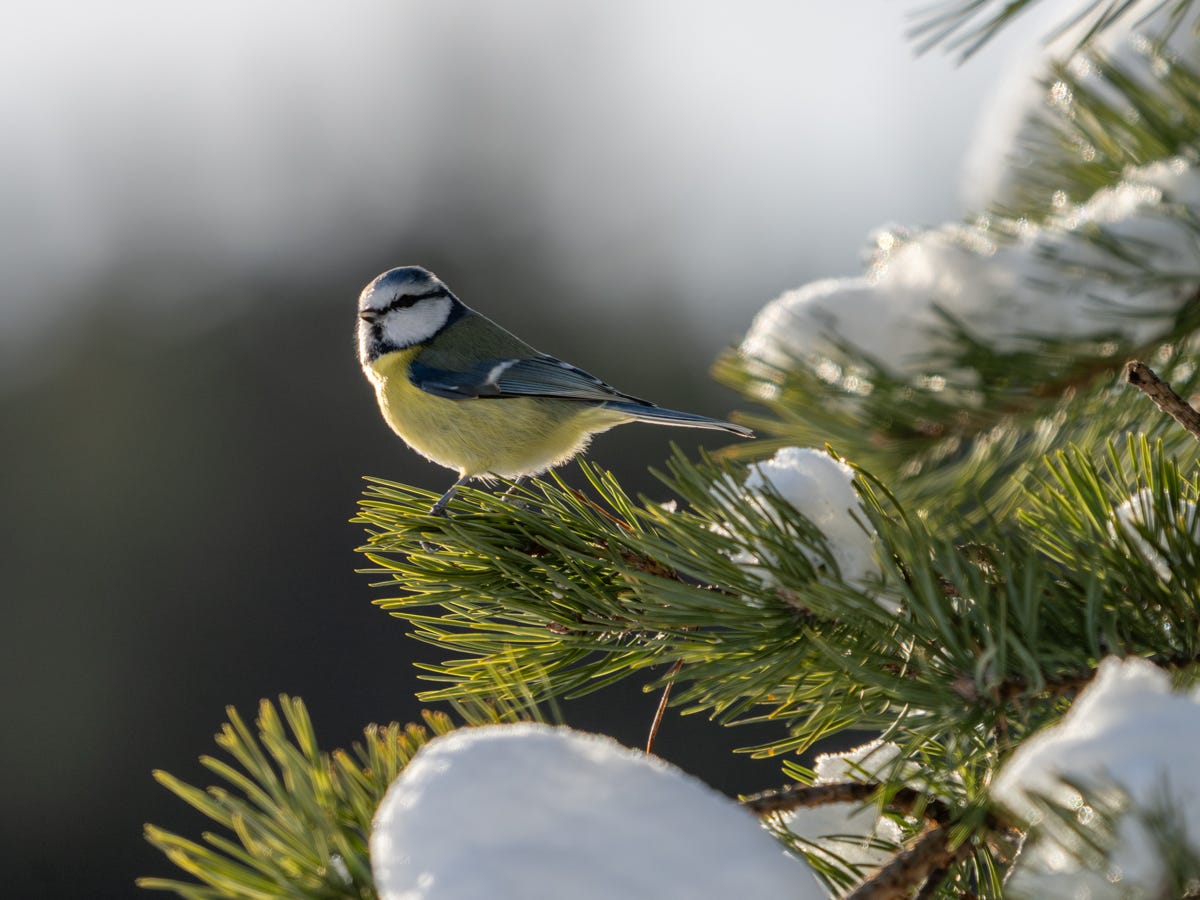
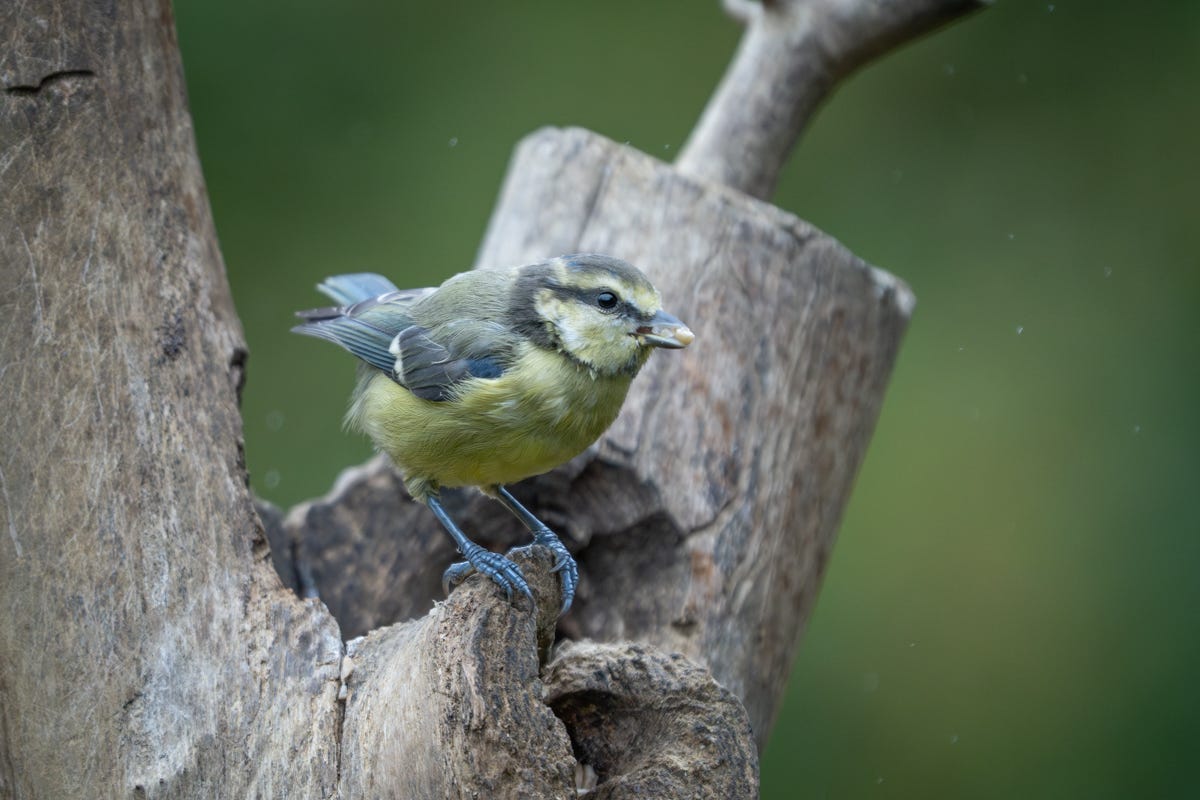

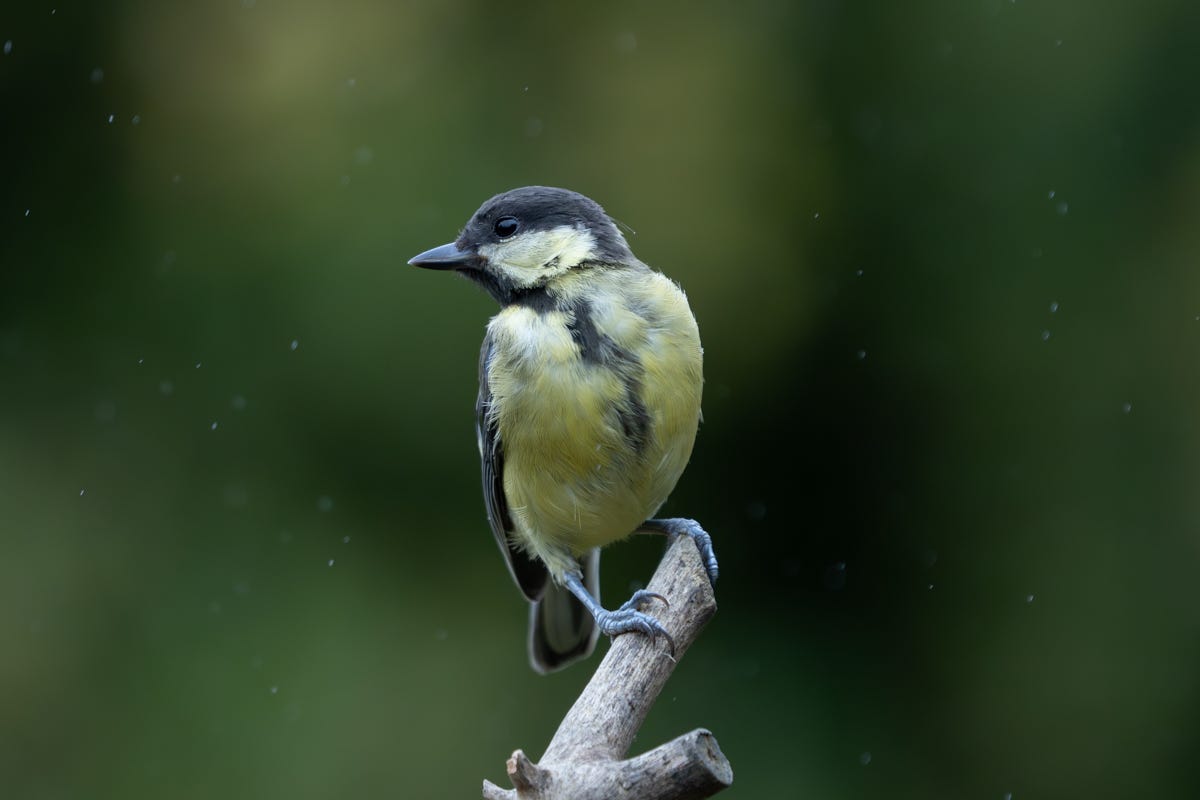
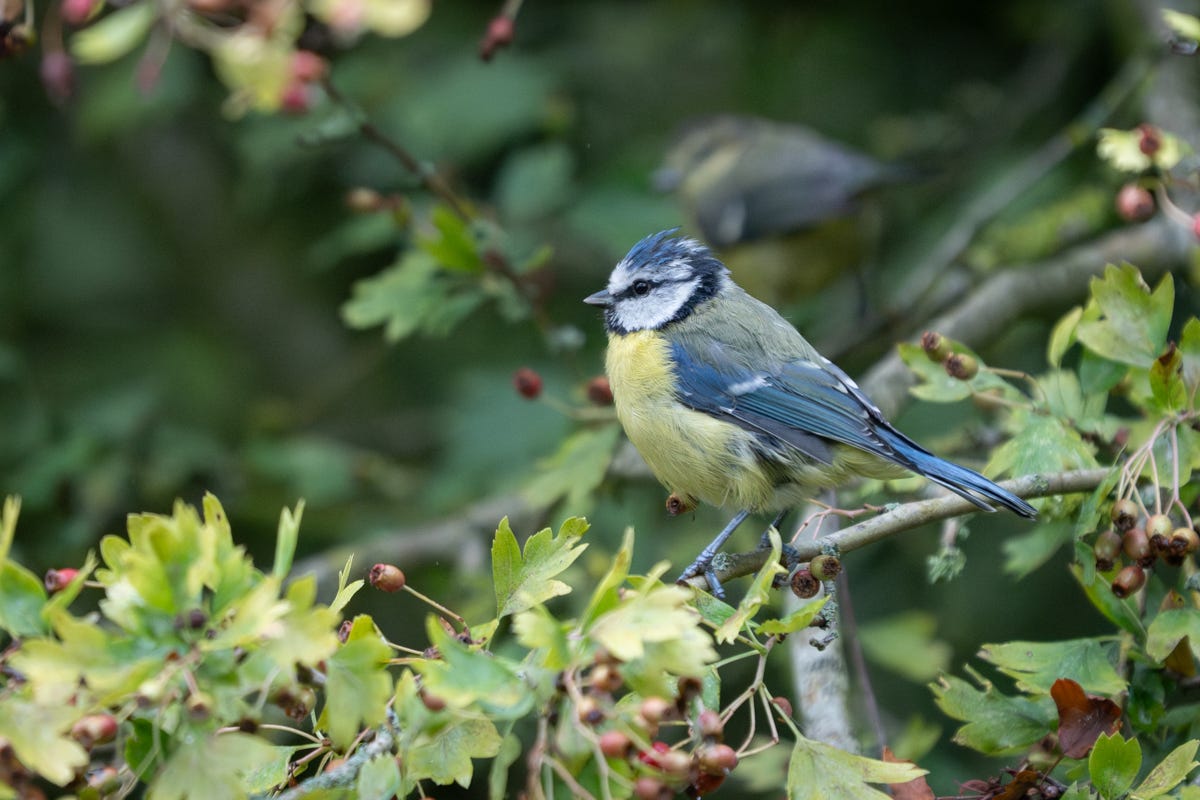
Hello! This is a fab piece - may I link out to it from Encounter, the free nature app I’ve created? It’s exactly the kind of accessible but expert content we want to point our users at!
A great writeup about my favourite garden bird, thank you! I always have a few in my garden in the winter and spring, initiating gang wars with the sparrows and great tits, but they always disappear in the summer - I'd love to know where they go!